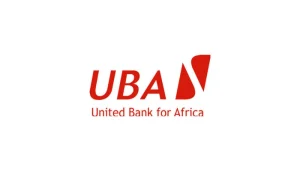ADVERTISEMENT
Financial inclusion, encompassing access to finance, is crucial for the economic and social inclusion of people with disabilities. However, many face difficulties in obtaining loans due to various barriers.
Challenges of access to finance
People with disabilities often face additional obstacles when seeking loans, such as discrimination, lack of collateral, and difficulty proving stable income. These challenges can lead to financial exclusion and limit opportunities for economic growth and independence.
ADVERTISEMENT
Importance of Financial Inclusion
Financial inclusion is essential to ensure that people with disabilities have access to resources to invest in education, health, entrepreneurship and other key aspects of their lives. Without access to adequate financing, many face difficulties in achieving their financial goals and improving their standard of living.
Specific loan programs
To address these challenges, several specific loan programs for people with disabilities have been developed around the world. These programs offer flexible terms, technical assistance and personalized support to help people with disabilities access credit more fairly and inclusively. In addition, many of these programs also promote awareness of the financial rights of people with disabilities, empowering them to better understand their rights and navigate the loan process with more confidence and autonomy. This holistic approach not only facilitates access to finance, but also strengthens the ability of people with disabilities to make the most of available financial opportunities.
ADVERTISEMENT
Necessary Adaptations
Loan programs for people with disabilities often require adaptations in credit assessment processes, collateral policies, and financial instruments offered. These adaptations are essential to ensure that the specific needs of people with disabilities are met effectively. In addition, such adjustments may include the implementation of accessibility measures in loan application procedures, such as forms in alternative formats to ensure that people with different types of disabilities can participate in the process without hindrance. In addition, warranty policies can be adjusted to consider other types of assets that do not fit traditional standards, such as assistive equipment or adapted vehicles. Similarly, financial institutions can tailor the financial instruments they offer to include more flexible payment arrangements, extended grace periods, or subsidised interest rates, taking into account the specific circumstances of people with disabilities and their financial needs.
Impact on quality of life
Access to finance not only improves the financial stability of people with disabilities, but also has a significant impact on their quality of life. With affordable loans, they can invest in care equipment, housing adaptations, education and vocational training, increasing their independence and participation in society.
Partnerships and collaborations
To further strengthen access to finance for people with disabilities, partnerships between the public sector, the private sector and civil society organizations are critical. These collaborations can promote the development of inclusive policies, innovative lending programs, and financial empowerment. In addition, these partnerships can facilitate the sharing of resources, knowledge and best practices between different sectors, enabling a more comprehensive and effective approach to addressing the challenges faced by people with disabilities in accessing finance. Governments, businesses, and civil society organizations can create an environment more conducive to financial inclusion by joining forces, where they recognize and meet the needs and rights of people with disabilities more efficiently and equitably.
Financial Education
In addition to access to credit, financial education plays a crucial role in empowering people with disabilities to manage their finances responsibly and effectively. Financial education programs tailored to the specific needs of people with disabilities can help boost their confidence and financial skills.
Funding for inclusion is a powerful tool to promote equal opportunities and autonomy for people with disabilities. Through targeted lending programs, adaptations in financial systems, and collaborative efforts, it is possible to create a more inclusive and empowering financial environment for all. These efforts not only benefit people with disabilities individually, but also enrich society as a whole by promoting diversity and inclusion in all spheres of life.





